We stand at the edge of the cliffs, hearts pounding. From below, it looked so easy. But now, facing the jump, it feels incredibly high. These are my thoughts as the kids are already jumping. Cliff jumping in Mallorca is great for all ages, as long as you choose the right height. And for parents, sometimes you just have to close your eyes and go for it.
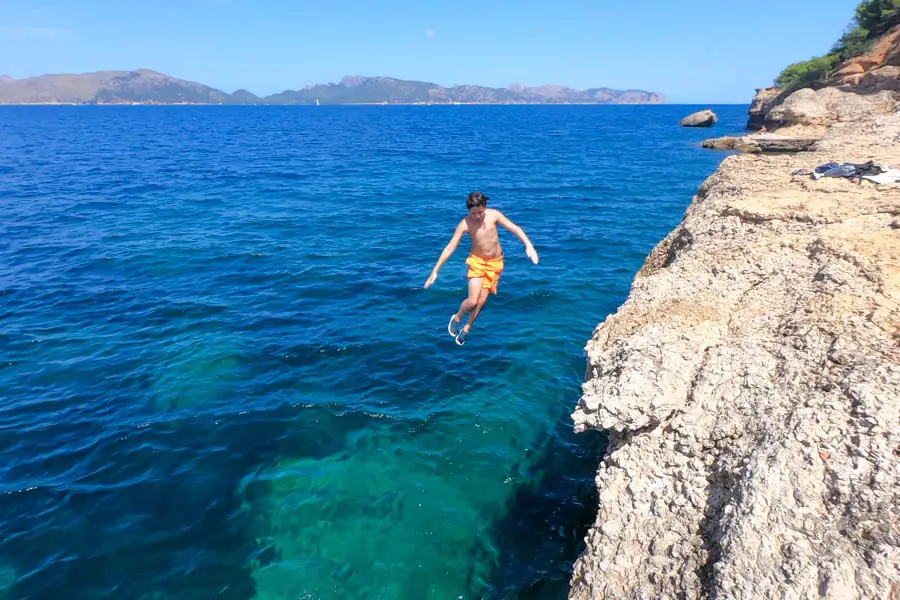
Transparency note: Some links in this post may lead to external booking opportunities. If a purchase is made, we receive a small commission. The price does not change for you.
My personal record was a 12-meter high cliff. However, that was a one-time thing and long before I had kids. Since they arrived, I’ve had much more trouble with cliff jumping in Mallorca. Especially when it comes to watching them jump. There are plenty of cliffs suitable for cliff diving all over the island. The local teens know the best spots. In this article, I’ll share some of these spots with you. There are easy ones for young children and nervous moms, as well as more challenging ones for those who dare. You’ll find them all marked on a map below.
Places for Cliff Jumping in Mallorca
Since we live in Santanyí, many of these tips are from the local area. However, during our trips around the island, we found other spots that I’m happy to share with you as well.
Note: You undertake these jumps at your own risk. Before each jump, make sure the water depth is sufficient and avoid excessive acrobatics. Accidents are rare but can happen.
Caleta des Frares, Alcúdia
Caleta des Frares is a small rocky cove in the Bonaire neighborhood, located on the peninsula behind Alcúdia. There are some great spots here for first time cliff jumpers. For a bit of help, there are iron ladders to assist you in getting back out of the water quickly for the next jump.
Read more about the region: The Best Beaches in Alcúdia
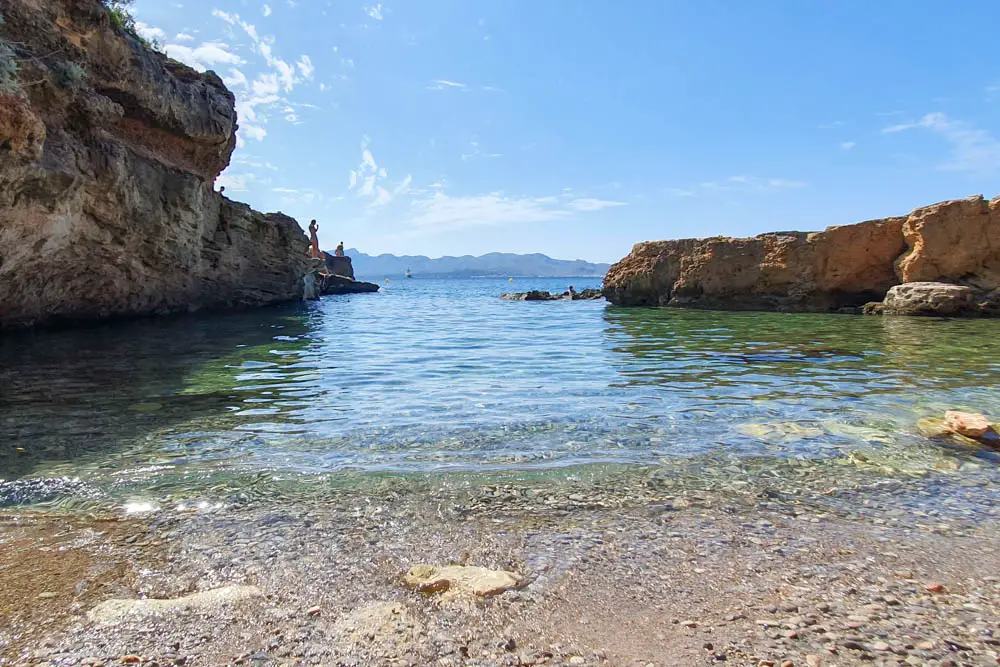
The water here is very clear. The jumping heights vary. There’s space for very young jumpers from the lower platforms. Those who are braver can try the higher cliffs. Extreme jumpers will find what they’re looking for a bit further north, but it requires walking along the cliff for a while.
Sa Barca Trencada & Mondragó Natural Park
The beach at Sa Barca Trencada is not very well-known, even though it’s located close to the Mondragó Natural Park. For cliff diving, you need to venture a bit out of the cove. The best way to do this is by walking along the coast. There are numerous private homes in the area, each with their own access to the sea via iron ladders.
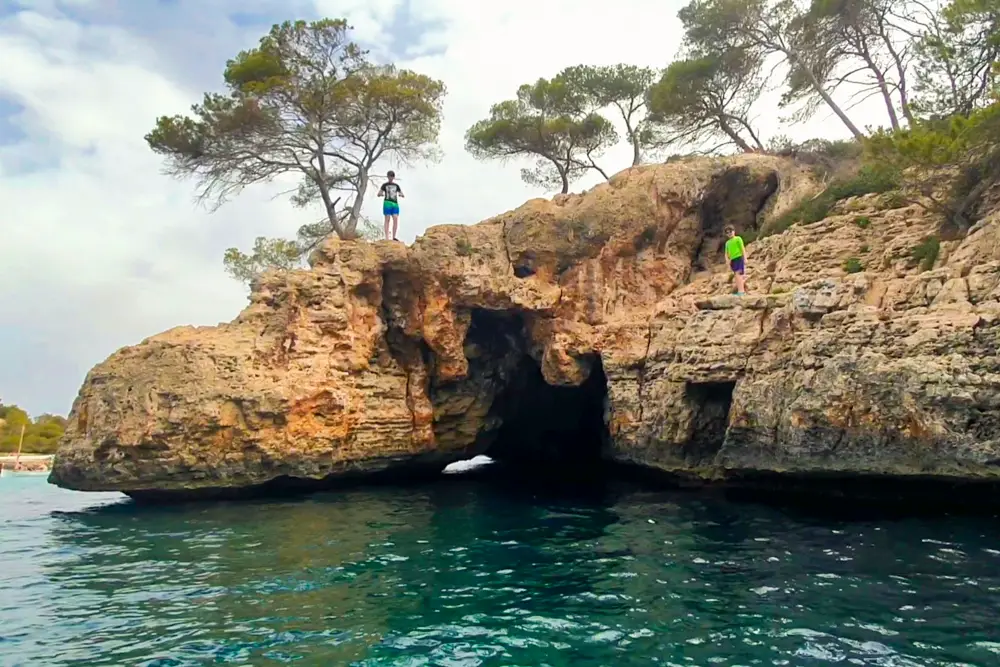
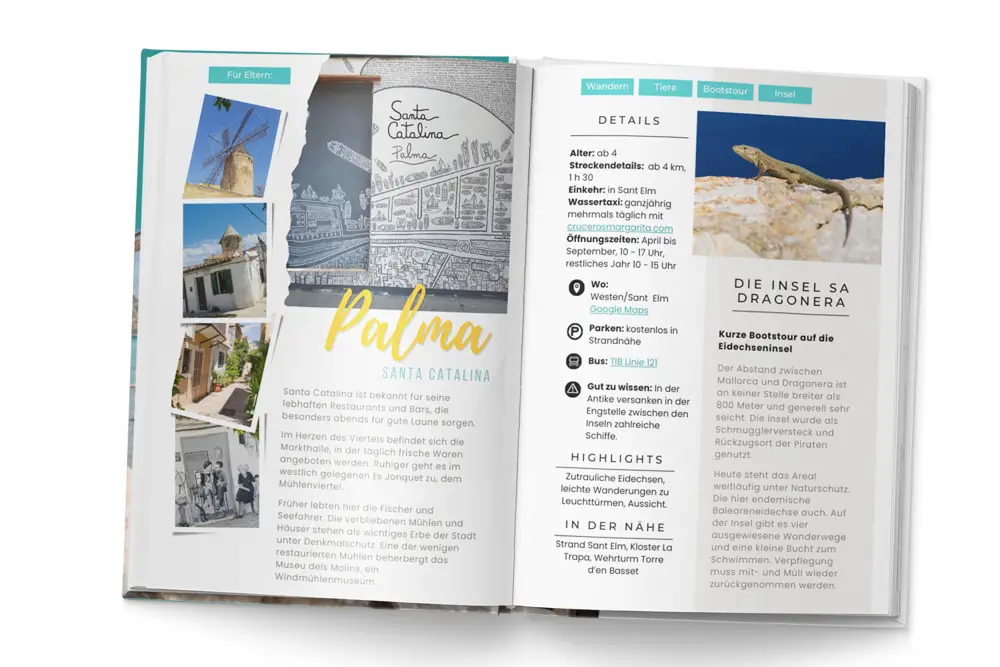
Du liebst diese Tipps?
Entdecke alle kinderfreundlichen Aktivitäten, Strände und exklusive Rabatte in meinem Mallorca-Guide.
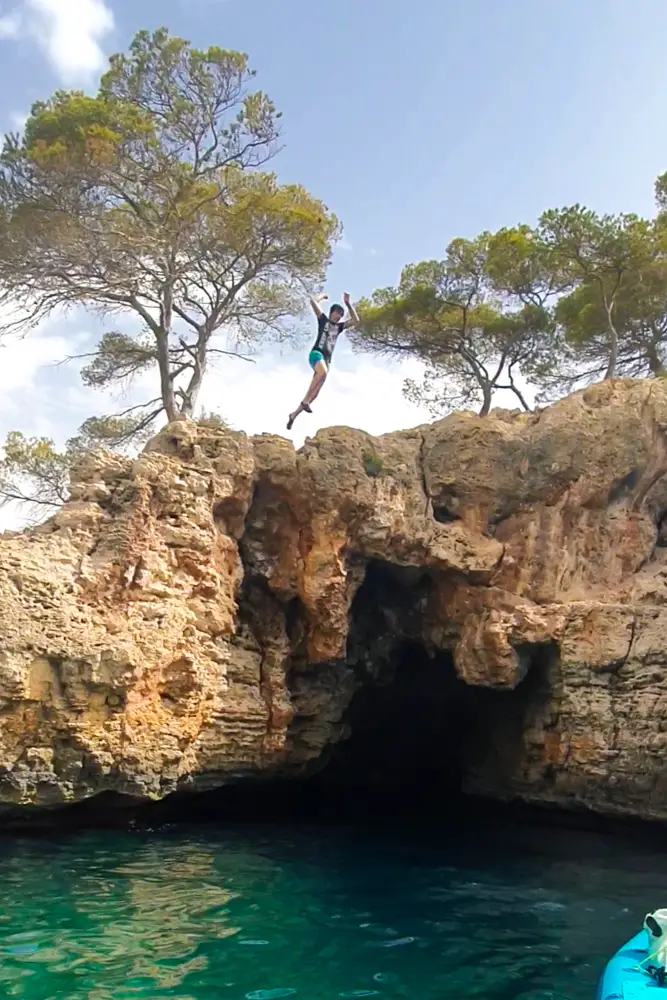
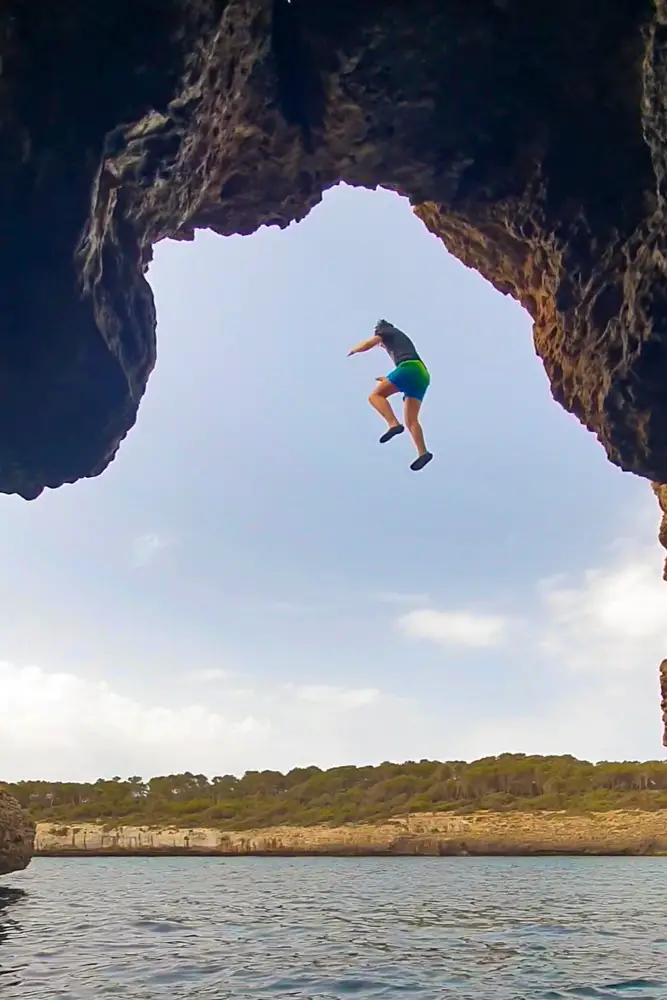
Outside the summer months, these ladders may be taken down. Additionally, some ladders are locked. Make sure there’s a way to get back out of the sea before you jump. The heights vary, and there are also some caves to explore.
From the beach Cala Mondragó / Ses Font de n’Alis, head left past a boat garage to a peninsula. Below, there’s a cave you can pass through. From above, next to the pine tree, you can jump into the sea opening in front of the cave entrance. To quickly get to the next jump, you can climb back up around the rock to the left (seaward) past the rock crevice, but it’s not easy. Alternatively, you can jump back to the beach and walk back to the jumping spot.
Cala Santanyí
Cala Santanyí is a particularly popular beach spot for families. It offers a variety of leisure activities and also some options for cliff jumping. The jump from the platform at the dive school is quite easy and can be done by very young children. From there, you can gradually work your way up to the point above the cave.
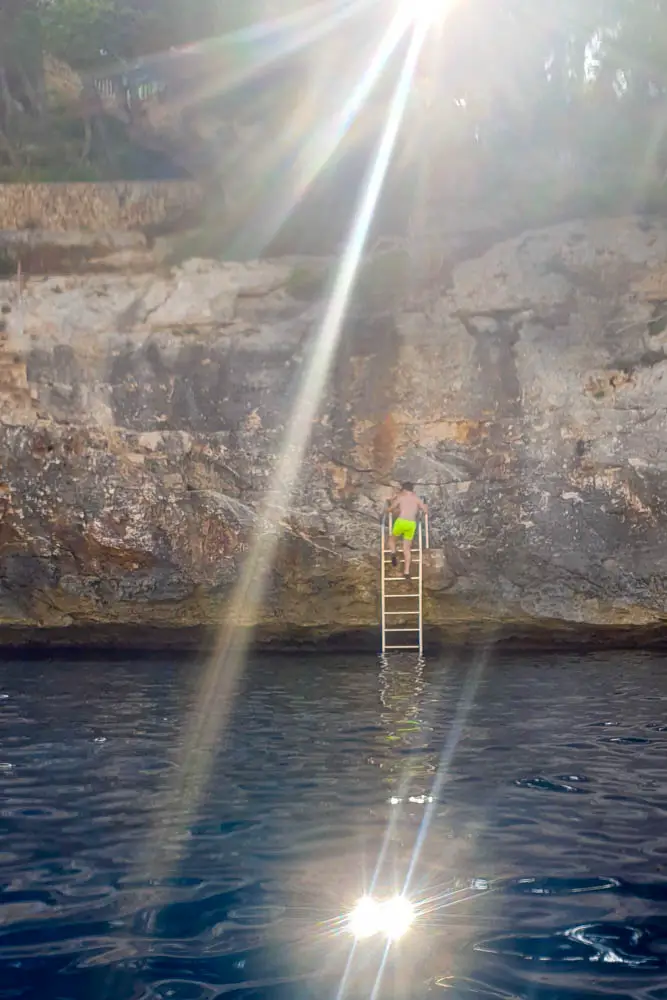
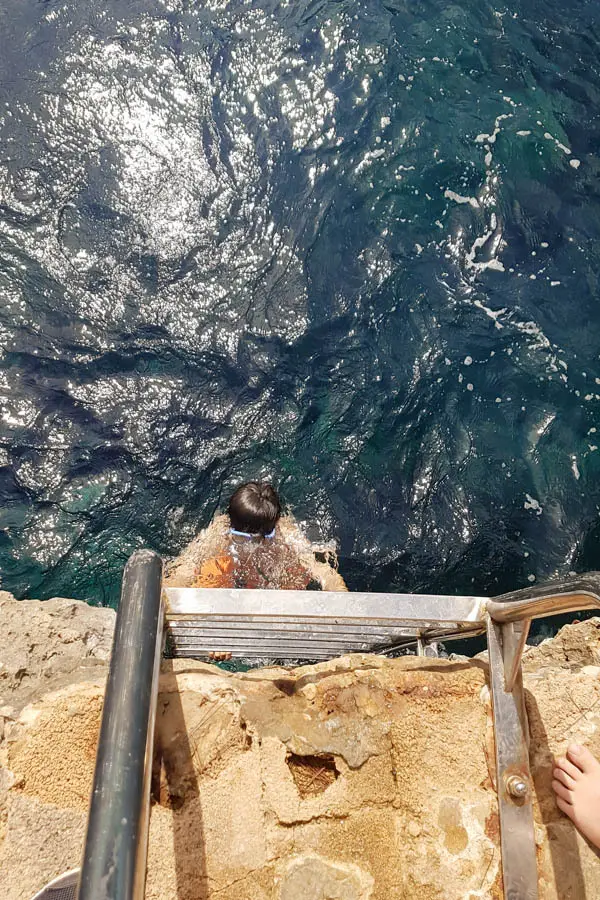
On the opposite side, you’ll find the cliffs for the pros. Here, teens jump from the rock ledge at the beginning of the small cove. A little higher up, there’s a small ladder to climb out. Alternatively, you’ll need to swim back to the beach.
Es Pontàs
Just a short distance outside the cove of Cala Santanyí, you’ll find the impressive stone arch Es Pontàs. Most people admire this natural monument from afar. Some swim through it, and the bravest climb up.
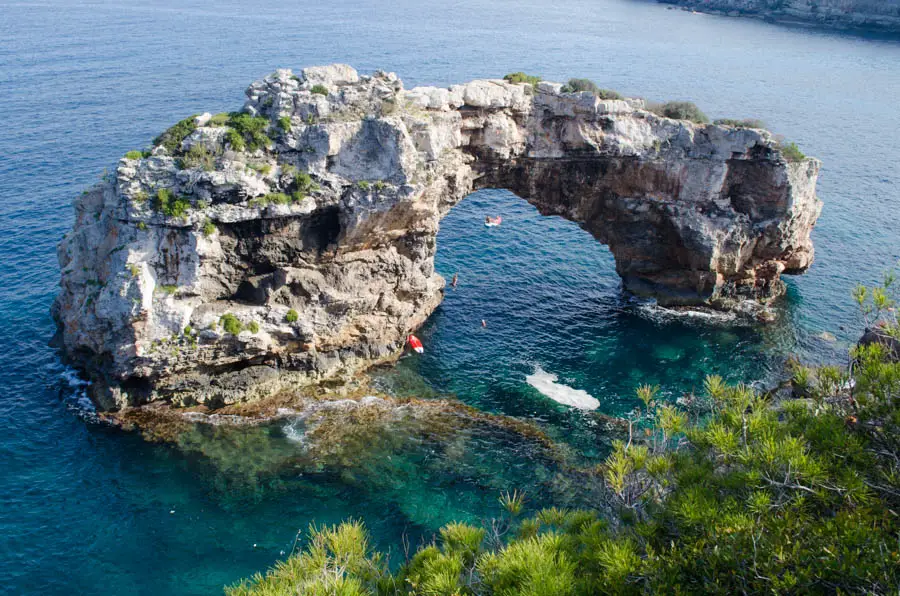
Once you’re up there, the only way down is a jump into the water. At more than 20 meters high, that’s not so easy. My husband took the leap as a teenager. Normally, you see the brave ones standing at the top of the arch for a long time before they actually make the jump.
Cala Llombards
At Cala Llombards beach, all levels of cliff jumpers will find plenty to enjoy. To the right of the beach, past the boat garage, you’ll reach a small rock platform where even the smallest jumpers can do so safely. There’s also a ladder here to help you out of the water.
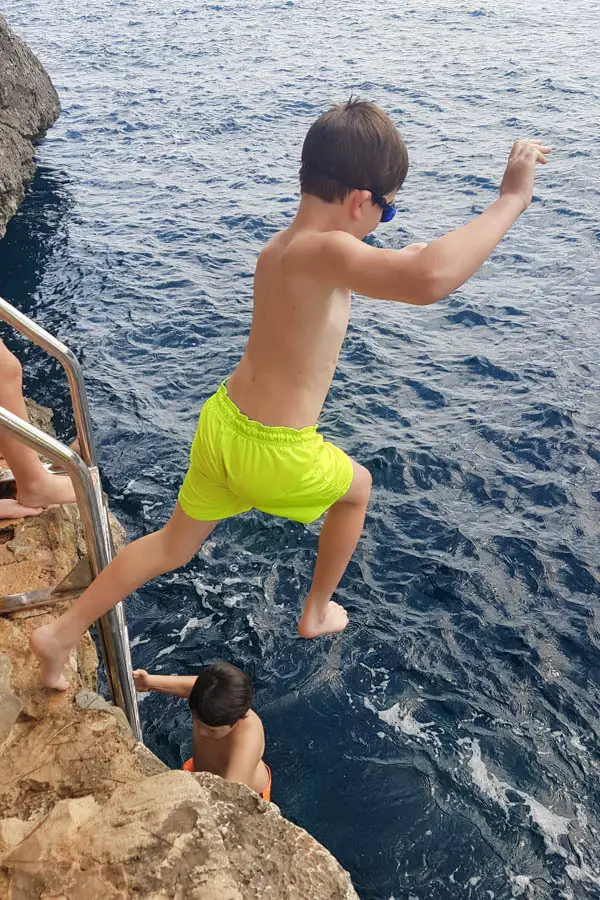
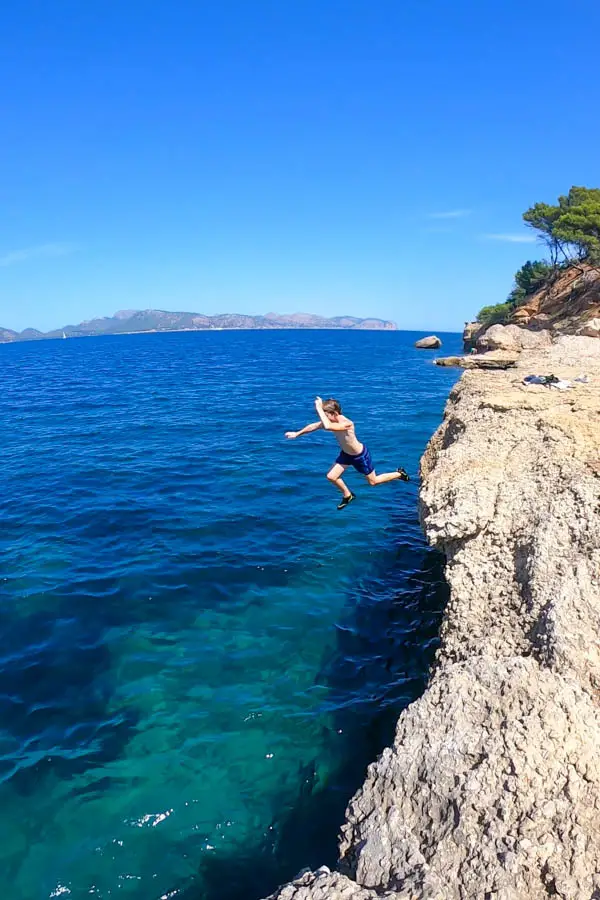
For those seeking more thrill, head to the opposite side behind the boat houses to the higher cliffs. But be cautious: there have been serious accidents here. Always check the depth beforehand. You’ll need to walk quite a distance out to ensure the water is deep enough.
Cala S’Almunia
The cliff jumping options at Cala S’Almunia are not as spectacular but offer a very beautiful backdrop. Most people jump from the rocks to the left of the boat garages. However, you need to be very careful here, especially in the summer, as many people swim in the water below.
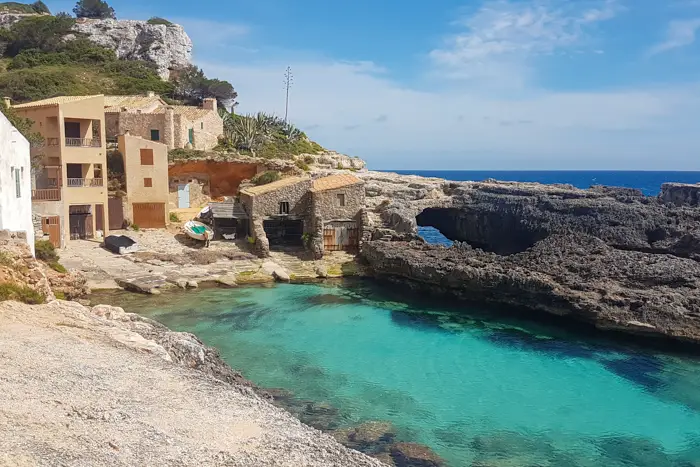
Some brave souls also jump into the rock crevice to the right of the boat sheds, where the sea has carved an entrance. To jump here, the sea must be calm and windless, as it can be too dangerous otherwise. There is no exit point at this location.
Punta Negra, Calvia
Punta Negra is a rocky promontory that separates two coves. On one side is a sandy beach, and on the other is a small rocky cove. From the rocky area, there’s a spot that’s very popular among the local teens for jumping.
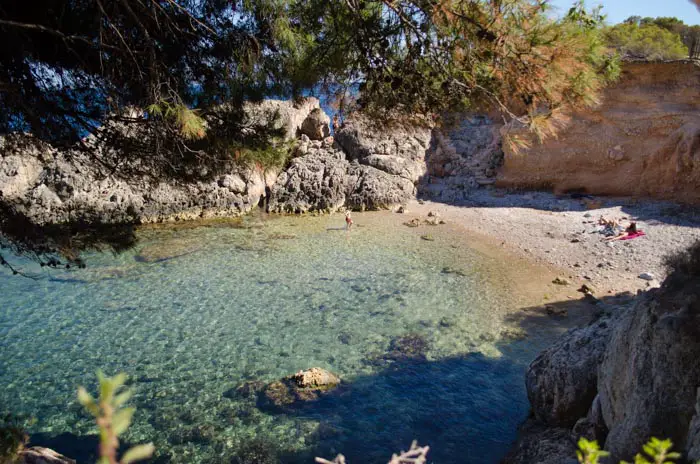
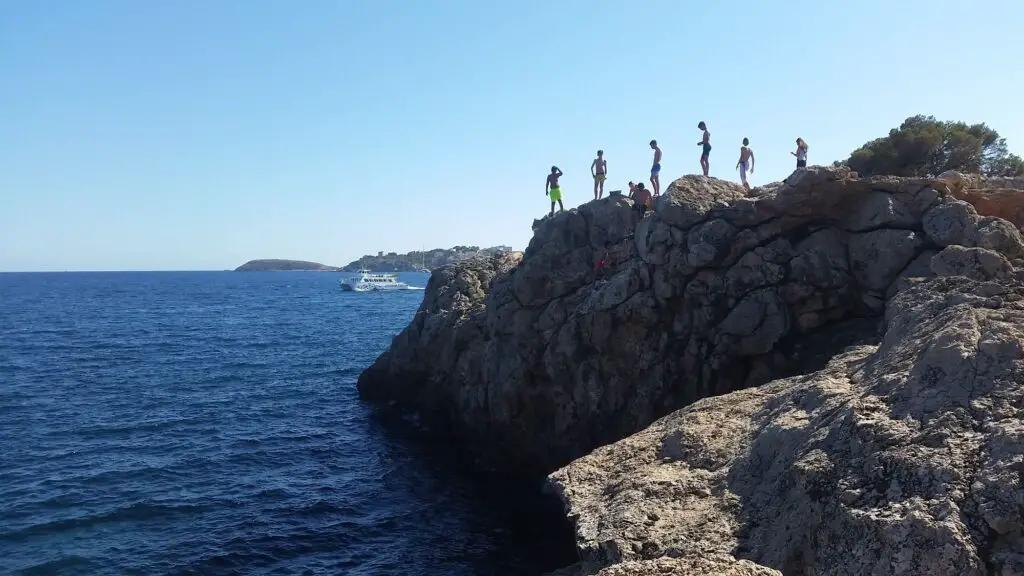
To get to the spot, you’ll need to walk all the way around the hotel. Head through an open iron gate, follow the coast, and cross the sandy beach to reach the cliff. You can also find this tip on the page about the 7 Hidden Coves in Palma.
All the cliff jumping spots mentioned here can be found on this map.
Costeering: Organized Cliff Jumping Tours in Mallorca
If you’re not confident going alone or are looking for a special challenge, an organized tour might be just what you need. These tours take you along the coast, combining hiking and jumping. The official term for it ist Costeering.
Coasteering is an activity that blends swimming, rappelling, climbing, and more swimming. With experienced and licensed guides, you’ll explore sea caves and other hard-to-reach parts of the coast.
Read More
Want more recommendations like this? Check out more than 100 day trips and excursions on Mallorca.
Planning your holiday on Mallorca:
Book your Flight here
Great Rental Car Offers